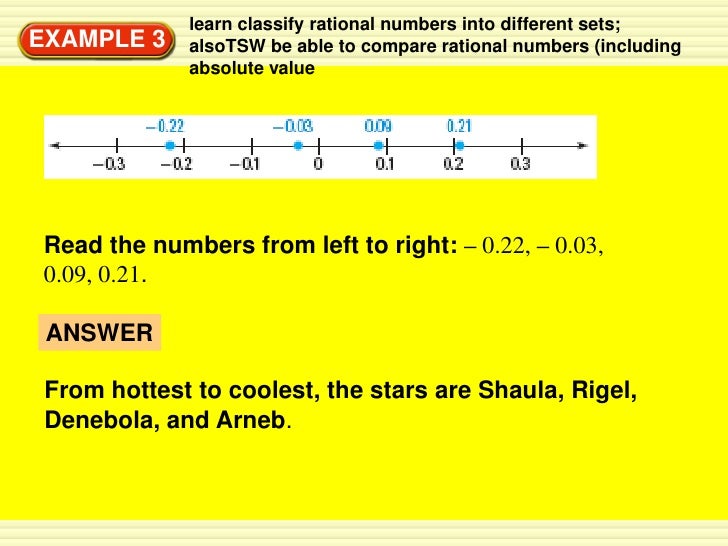

however the digits go on infinitely but there is no pattern to them. Rational numbers are all numbers that can be written as the ratio (or fraction) of 2 integers. π can be represented with numerals, i.e., 3.14159265. Consider the statement All integers are rational numbers but some rational numbers are not integers. 175 is represented by -7/40, and 1 1/6 is represented by 7/6. 3 can be expressed as 3/1, -0, for example. Every rational number can be expressed as a fraction a/b, with a and b being integers. An irrational number cannot be represented as a fraction (i.e., a rational number). All integers, as well as all fractions, Terminating decimals, and repeating decimals, are included in the rational numbers. As it can be written without a decimal component it belongs to the integers. Example The number 4 is an integer as well as a rational number. A rational number is a number a b, b 0 Where a and b are both integers. Dan Uznanski at 18:55 2 As Michael Hardy pointed out, it means that there is a rational between any two reals. The set doesn’t include fractions and decimals. All integers belong to the rational numbers. 1 en./wiki/Denseset is the 'dense' involved. This means that the set of integers is a subset of the set of rational numbers. For example, 3 can be written as 3/1, -0.175 can be written as -7/40, and 1 1/6 can be written as 7/6. These are any numbers that can be expressed as a fraction, which includes all integers and most decimals. Every rational number can be written as a fraction a/b, where a and b are integers.
INTEGERS ARE RATIONAL NUMBERS PLUS
These expand to the real numbers ( R), which include irrational numbers such as π, √2. Integers: Integers are the set of numbers including all the positive counting numbers, zero as well as all negative counting numbers which count from negative infinity to positive infinity. First, we can note that all integers are rational numbers, since if, then 1, so. The rational numbers include all the integers, plus all fractions, or terminating decimals and repeating decimals.

That's one sense in which the rationals are more dense than the integers.

The rational numbers are, in the technical sense, dense (their closure is R), and the integers are discrete. These can be called decimal fractions, because they can be written in a fractional form (e.g., 3/10, 32/100, ⁻27/10). Any rational number will be of the form p/q where, p and q are integers and q not equal to zero. One can study the topology of the rational numbers and the integers as subsets of the real line, and they are very different. We next move onto decimal numbers (such as 0.3, 0.32, ⁻2.7).


 0 kommentar(er)
0 kommentar(er)
